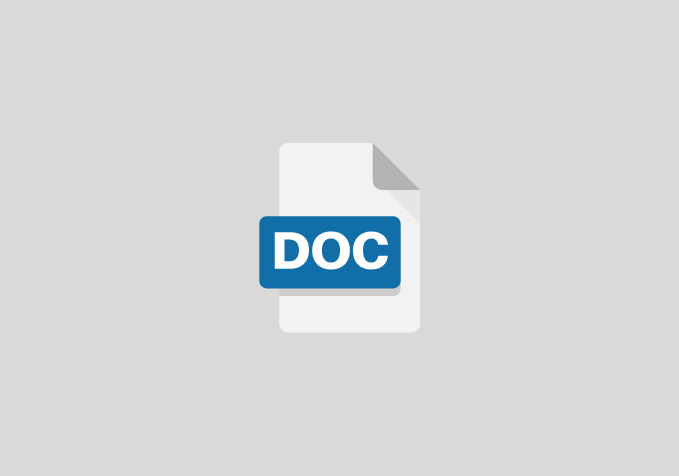Positioning the Rural Economy for the Implementation of the Sustainable Development Goals. Case Study of Okene Local Government Kogi State
CHAPTER ONE
Objective of the study
The major objective of this study is to examine the Positioning Rural economy for implementation of sustainable development goals in Okene local government of Kogi state
The specific objectives of this study are to:
- Determine the relevance of community development projects and programmes and their effects on sustainable development goals in Okene local government of Kogi state
- Examine the effects of community participation on sustainable development goals in Okene local government of Kogi state
CHAPTER TWO
LITERATURE REVIEW
It is important to recognize that most of the challenges of development in Nigeria are a clear manifestation of the weakness in the strategies adopted by the government, from Federal, State, and Local Government. Most of the development strategies adopted by government are mostly those that are top-down in their approaches. For example, the development programmes to empower the people or enhance community development from time, such as DFRRI, NAPEP NEEDS with state and local versions are all not people friendly, since the people were not involved or carried along. This makes community development to suffer and thereby frustrating sustainable development goals. This is because the input from the people was not included, despite the fact that the development was targeted at them (Obetta and Charity, 2012).
The people lacked sense of belonging to any of government projects or programmes, they never felt as if they were part of the development effort of their communities, which affected the maintenance of those projects, leading to the problem of not sustaining those facilities or programmes put in place to serve the people. In some communities in Okene Local Government area of Kogi state, like any other communities within the country, there are projects initiated and implemented by the government that are no longer serving the purpose which they were meant for because the community’s inputs were neglected. For example the urban generated climate anomaly in Okene town, Agassa Gully Erosion sub-project are no longer functioning. Also, motorized borehole powered rehabilitation of broken down, boreholes in some locations in Okene Local government of Kogi state all are not functioning. Most of government projects and programmes provided by government within the local government area are not properly maintained, thereby leading to problem of sustainability.
It is mostly a top-down approach to community development, which makes projects and programs unsustainable due to misplaced priorities, as to what the people need, is not what is given to them, but what the donors feel they need.
It is against this background that the study explores how, and what model to be used for community development to serve as a veritable strategy for sustainable development goals in Okene local government of Kogi state.
CHAPTER THREE
Definition of terms
Rural economy: Rural economics is the study of rural economies, including: farm and non-farm industry. economic growth, development, and change. size and spatial distribution of production and household units and interregional trade. land use.
Implementation: Implementation is the carrying out, execution, or practice of a plan, a method, or any design, idea, model, specification, standard or policy for doing something. As such, implementation is the action that must follow any preliminary thinking in order for something to actually happen.
Sustainable development goals: The Sustainable Development Goals or Global Goals are a collection of 17 interlinked global goals designed to be a “blueprint to achieve a better and more sustainable future for all”. The SDGs were set up in 2015 by the United Nations General Assembly and are intended to be achieved by the year 2030.
CHAPTER FOUR
References
- Weisfeld-Adams E, Andrzejewski A. 2008. The Hunger Project. 5 Union Square West, New York, NY 10003. www.thp.org (accessed on July 21, 2016)
- World Bank. 2000. Attacking Poverty, World Development Report 2001/2002, New York, Oxford University Press. World Bank. 2008. Understanding Poverty. http://web.worldbank.org/WBSITE/EXTERNAL/TOPICS/EXT POVERTY/0,,contentMDK:20153855~menuPK:373757~pageP K:148956~piPK:216618~theSitePK:336992,00.html (accessed on April 15th, 2008).
- Soludo CC. 2006. Can Nigeria Be The China of Africa? Being a Lecture Delivered At the Founder’s Day of the University of Benin, Nigeria; Nov. 23.
- Shetty S. 2005. Millennium Declaration and Development Goals: Opportunities for Human Rights, International Journal of Human Rights, Year 2, No. 2.3.
- Okonjo-Iweala N, Soludo CC, Muhtar M. 2003. ‘Introduction’, In N. Okonjo-Iweala, C. C. Soludo, M. Muhtar (Eds) The Debt Trap In Nigeria: Towards A Sustainable Debt Strategy, Pp. 1 19. Trenton, Africa World Press, Inc.
- Dollar D, Kraay A. 2000. Growth Is Good For the Poor”, World Bank (Mimeo) (March).


